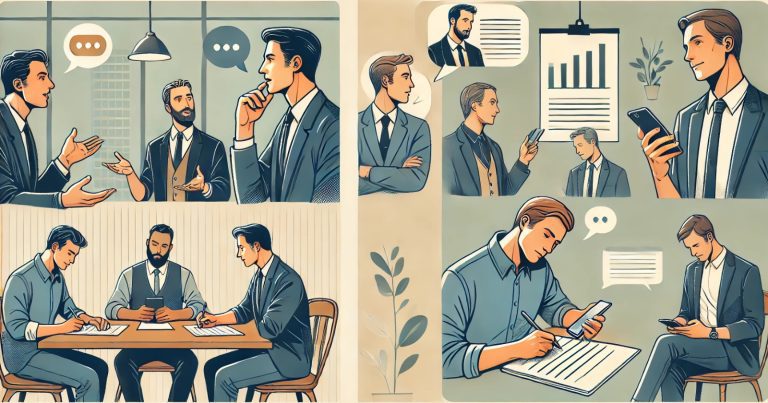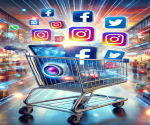Communication is exchanging information, ideas, or emotions between individuals or groups through speech, writing, or other media. Modes of communication are how we send messages and information between others and ourselves. These modes include verbal and non-verbal language, such as written, spoken, or digital. It is important to realise that communication consists of multiple types and modes, which is essential for improving personal and professional relationships. In this article, we will discuss what communication is, its significance, the various modes, and the challenges that affect communication and barriers to communication.
What is Communication?
Communication refers to transferring information, ideas, concepts, and feelings between people or groups. It enables people to comprehend one another, exchange experiences, and work together toward common goals. Communicated verbally, written, nonverbal, physical, or even visual aides. So, you primarily communicate to pass on a message clearly and efficiently.
Importance of Communication
Communication is important in personal, professional, and social settings. You achieve understanding, cooperation, and growth through communication.
- For Individuals: Provide reasoning to individuals who can understand and articulate things more clearly in their personal and professional relationships, as they can comprehend it better. Communicating effectively improves relationships, settles disputes, and encourages respect. It helps to improve confidence in social situations.
- For Businesses: It enables clear communication among team members and stakeholders, ensuring smooth operations and decision-making. It improves team collaboration, increases employee engagement and builds a healthier workplace. Good Communication Builds Customer Relations and Trust
- From the Society: Raises awareness for social causes and motivates others towards improving society. It also fosters cultural exchange, understanding and harmony; it brings people closer. Good communication reduces misunderstandings in diverse cultures.
- Education: Promotes open discussions and shared content in solving questions and sharing knowledge in development by looking into aspects. It allows students to put their ideas, questions, and understanding of concepts into words. Dynamic and interactive learning environment, communication between teacher and students.
Modes of Communication
The modes of communication can be broadly categorised into verbal and non-verbal communication. Each mode has its unique features and is suited for different situations.
Verbal Communication
Verbal communication refers to the use of spoken words to communicate information. It comprises face-to-face, telephone, and video calls, with the most popular and simplest-to-understand communication type. There are also other situations where people are called to communicate verbally, such as in professional environments, such as business meetings, conferences, or presentations where clear and structured language is used. Conversational Informal verbal communication occurs in scenarios like chit-chat between family and friends. Both types are necessary for productive communication, yet formal oral communication usually requires greater clarity and organisation.
Non-Verbal Communication
Non-verbal communication involves body language, facial expressions, gestures, posture and eye contact to send the message. It supplements verbal communication by making non-verbal messages of emotions and feelings replace words that may not be able to describe adequately. A smile signifies happiness, and a frown denotes sadness. For example, hand movements or a thumbs-up can indicate agreement or emphasis. Standing or sitting can convey openness or confidence, and eye contact can indicate interest or engagement. These include facial expressions, gestures, posture, and even tone of voice.
Written Communication
This means of communication is when we communicate by written words or signals. It is used in formal situations, like business emails, reports, letters, official documents, etc. Written communication allows you to be more detailed, and it can be referenced later on. However, it doesn’t have the emotional context of a personal conversation and can easily be misinterpreted if not crafted properly. However, written communication is still one of the most powerful and widely used tools that ensures clarity, structured information, and having a record of what you have shared!
Visual Communication
Visual communication, by use of images, pictures, graphics, charts, graphs, and videos, uses it as a tool to resonate better with the crowd. Graphs or Charts in educational material, advertisements, and presentations often use this Graph or chart to make it easy to compare and understand complex data and ideas. Infographics visually present data intermixed with text , making the information clearer. Charts and graphs show trends and data visually, allowing audiences to digest complex information quickly. Through visual and audio stimulation, videos make it easier to remember your message while adding a dynamic and emotional component to your communications.
Listening
Effective communication followed also requires good listening skills. It means listening, understanding and responding to the messages people communicate. Active listening means listening to the speaker and getting the meaning so you can reply. Listening is essential to building trust and rapport, personally or professionally. It is a skill based on concentration and the ability to wait, a means of developing listening skills and solidifying personal interactions. Good listening also decreases misunderstandings and facilitates clearer, more efficient communication.
Verbal vs. Non-Verbal Communication
Both verbal and non-verbal communication are essential for effective interaction, but they differ significantly.
| Aspect | Verbal Communication | Non-Verbal Communication |
| Definition | It involves spoken or written words to convey messages. | It involves body language, gestures, facial expressions, and posture to convey messages. |
| Medium | Spoken words, written text (emails, letters, etc.) | Body language, gestures, facial expressions, posture, eye contact. |
| Purpose | To clearly and directly convey information or instructions. | To supplement or emphasize verbal messages or convey emotions and feelings. |
| Formality | It can be formal (business meetings) or informal (casual chats). | It can be formal or informal, often unspoken and more spontaneous. |
| Example | Giving a speech, making a phone call, and sending an email. | Smiling, nodding, making eye contact, crossed arms. |
| Clarity | Usually clear if the message is well-structured and concise. | It may require interpretation based on context and body language. |
| Speed | Immediate, but can be limited by speaking or writing speed. | Instantaneous and continuous, it is often easier to convey emotions quickly. |
Barriers of Communication
Effective communication can be hindered by several barriers, which may affect the clarity and accuracy of the message. These barriers include:
Physical Barriers
Physical barriers are those circumstances that hinder optimal communication. These can be loud noises, bad lighting or absence of personal space. For instance, if two people attempt to speak in a noisy, crowded space, they will struggle to hear and comprehend each other. These kinds of barriers can interrupt the flow of the conversation and lead to miscommunication.
Language Barriers
Language barriers exist whenever a group of people either speak completely different languages or have differing levels of fluency in a language. This can hinder communication and result in misunderstandings. As a non-native English speaker, listening to someone talking only in English can sometimes make it difficult for him to understand what they say, thus not having a good conversation.
Cultural Barriers
The cultural barrier occurs when people from different backgrounds have difficulty communicating due to other traditions, beliefs, or values. Such differences can affect the way people communicate. One example of translation loss is that a gesture or phrase might not appropriately convey the intended message between cultures.
Emotional Barriers
Emotional barriers are when the feelings of an individual impact their ability to communicate. If someone is stressed, angry, or upset, it’s a lot more difficult to articulate what you want to say, and it’s a lot more difficult to hear what someone else is saying. For instance, if someone is angry, they may not be able to communicate calmly and logically in a conversation, thus affecting the conversation itself.
Perceptual Barriers
Perceptual barriers arise when people have differing perceptions or understandings of a scenario. These barriers may come from prejudices, misconceptions, or differing cognitive interpretations. One such case could be two people in a conversation about something but have different perceptions of the message, which will create problems in understanding what each other means; therefore, reaching common ground will be harder.
Modes of Communication FAQs
What are the types and modes of communication?
The four main types of communication are verbal, non-verbal, written, and visual.
What is the difference between verbal and non-verbal communication?
Verbal communication uses words to convey messages, while non-verbal communication relies on body language, facial expressions, and other visual cues.
What are some ways to enhance communication skills during group discussions?
Practice closely listening to others, articulating solutions clearly, and respecting differences.
What are some common barriers of communication?
These challenges can be language barriers, noise barriers, noise barriers, and cultural barriers.
How do I overcome communication barriers?
Some Examples Overcoming Communication Barriers, Being Mindful of Language, Provide Clear Messages, Allow Open and Respectful Dialogue.


